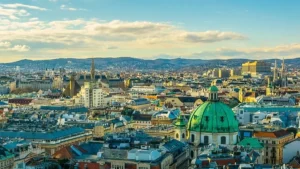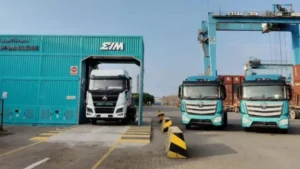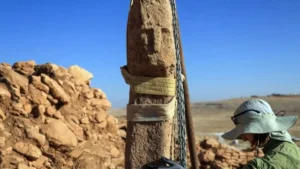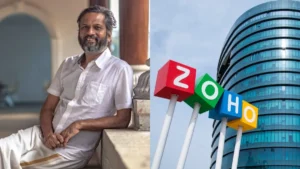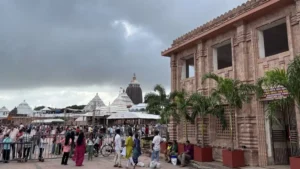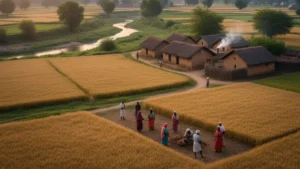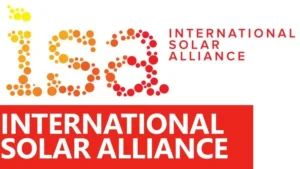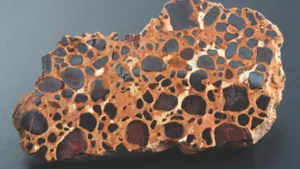Current Affairs 2025 – Daily, Weekly, Monthly updates are crucial for every competitive exam aspirant. Adda247 is a trusted platform that provides the Latest Current Affairs 2025 in an easy-to-read format, covering Current Affairs Today along with detailed Current Affairs 2025–26 compilations.
From Bank, SSC, UPSC, Railways, and Insurance exams, Adda247 ensures students stay updated with important national and international events. The platform offers daily current affairs, weekly summaries, and monthly PDF capsules, helping aspirants strengthen their general knowledge and score better in exams.
By regularly following Current Affairs 2025, aspirants can build strong exam readiness, improve accuracy in the GK section, and stay ahead with reliable, exam-focused updates tailored to government exam preparation.
Today’s Latest Current Affairs
- What is the Capital of Austria? Know About ItOctober 9, 2025Austria is a beautiful European country known for its rich history, culture, and scenic landscapes. It is ...
- Nitin Gadkari Inaugurates India’s First Electric Truck Battery Swapping StationOctober 9, 2025In a significant step toward promoting green transportation and reducing carbon emissions, Union Minister for Road Transport ...
- Blackstone Appoints Apurva Shah to Lead India Credit DivisionOctober 9, 2025On October 8, 2025, global investment firm Blackstone announced the launch of its India credit platform, appointing ...
- 12,000‑Year‑Old Pillar Carved with Human Face Unearthed in TürkiyeOctober 9, 2025In a groundbreaking discovery, archaeologists in southeastern Türkiye have unearthed a 12,000-year-old T-shaped pillar featuring a carved ...
- Meet The Sridhar Vembu The Founder of Zoho CorporationOctober 9, 2025Sridhar Vembu, the Founder and CEO of Zoho Corporation, is one of India’s most influential and unconventional ...
- Who is Bhushan Ramkrishna Gavai? Know About His Life, Career and AchievementsOctober 9, 2025Justice Bhushan Ramkrishna Gavai is one of India’s most respected judges and currently serves as the 52nd ...
- Odisha to Launch “Gyana Yagnya Mandap” Digital Library at PuriOctober 9, 2025In a landmark initiative to blend heritage conservation with modern technology, the Odisha government has announced the ...
- NAKSHA Programme Transforms Urban Land Records in IndiaOctober 9, 2025India has taken another major stride in digital governance with the launch of the NAKSHA Programme, a ...
- India to Host 8th International Solar Alliance Assembly In DelhiOctober 9, 2025India is set to host the 8th Session of the International Solar Alliance (ISA) Assembly from October ...
- Which Indian State is the Largest Bauxite Producer?October 9, 2025India is a land of diverse cultures, languages, and landscapes, divided into 28 states and 8 union ...
General Studies
- What is the Capital of Austria? Know About It October 9, 2025
- Who is Bhushan Ramkrishna Gavai? Know About His Life, Career and Achievements October 9, 2025
- Which Indian State is the Largest Bauxite Producer? October 9, 2025
- Which Indian State is Known as the Land of Rivers in India? October 9, 2025
- Which District of Uttar Pradesh is Known as the City of Justice? October 8, 2025
- Top-10 Indian States with the Highest Daily Wages in 2025, Check the List October 8, 2025
Important Days 2025
- Important Days in October 2025: National and International Dates List October 8, 2025
- Indian Air Force Day 2025 Celebrates Modern Strength, Legacy October 8, 2025
- Valmiki Jayanti 2025: Check Date, Timings, History, Significance and Celebrations October 7, 2025
- Maharishi Valmiki Jayanti: Honouring the Author of the Ramayana October 7, 2025
- World Cotton Day: Honouring Cotton’s Global Economic Role October 7, 2025
- World Habitat Day 2025: Urban Crisis Response Focus October 6, 2025
Latest Current Affairs 2025
Staying updated with the Latest Current Affairs 2025 from adda247 current affairs can significantly enhance your general awareness and give you a competitive edge in exams like IBPS PO, SBI PO & Clerk, UPSC IAS, SSC CGL & CHSL, RRB NTPC, Group D, and many others. Since Current Affairs 2025–26 form a crucial part of the General Awareness syllabus, thorough preparation is essential for success. With Adda247’s structured resources, your exam journey becomes more efficient, result-oriented, and confidence-driven.
For government exam aspirants, keeping up with Daily News Current Affairs Today is vital, as it directly impacts performance in highly competitive tests. The Current Affairs section evaluates candidates’ awareness of ongoing developments, making it a key element of the preparation strategy. Staying informed not only boosts your chances of securing a government job but also builds a strong foundation for long-term career growth.
Access Daily Current Affairs Updates for Exam Success
To access Daily Current Affairs Updates, candidates can visit the Current Affairs Adda website and explore dedicated sections for Daily, Weekly, and Monthly Current Affairs 2025. This ensures effective preparation strategies that help aspirants excel in Banking, SSC, Railways, UPSC, and Insurance exams.
With exams witnessing intense competition every year, the General Awareness (GA) section becomes decisive, especially in assessing knowledge of the Latest Current Affairs 2025–26. Regular updates, consistent revision, and focused practice on recent events can greatly improve your performance, ensuring better exam readiness and overall success.

